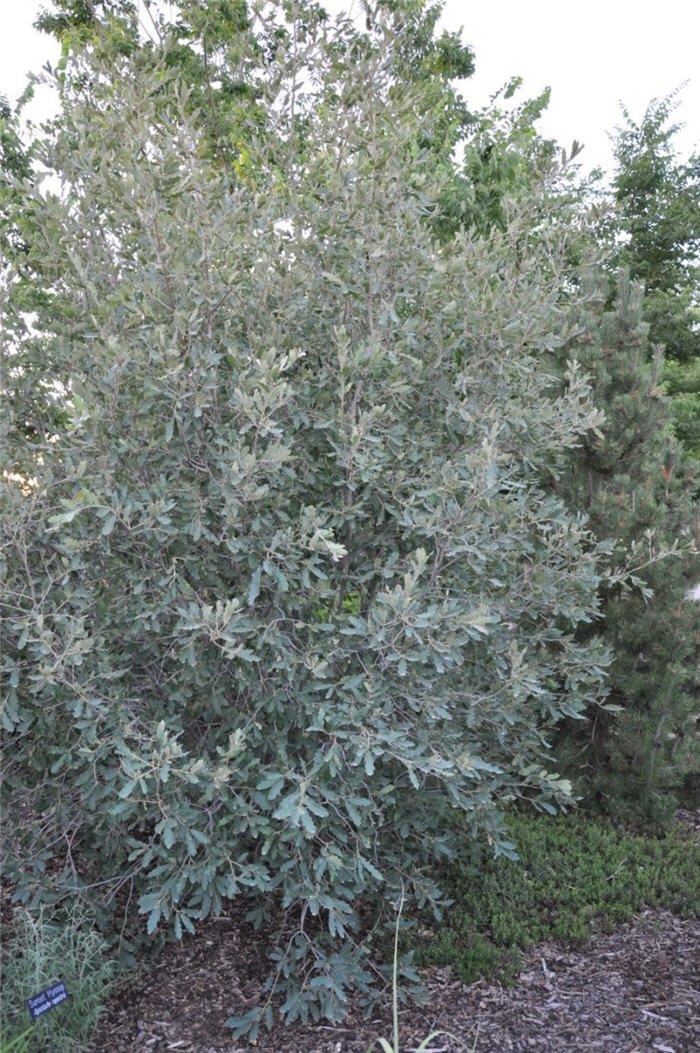| Botanical Name: Quercus undulata | |
| Common Name: Wavyleaf Oak |

-
Anatomy
-
Culture
-
Design
Plant Type
Shrub
Height Range
6-12'
Flower Color
n/a
Flower Season
n/a
Leaf Color
Blue Green
Bark Color
Brown
Fruit Color
Brown
Fruit Season
Summer, Fall
Sun
Full, Half, Shade
Water
Low
Growth Rate
Slow
Soil Type
Clay, Loam, Rocky
Soil Condition
Average, Rich, Poor, Well-drained, Dry
Soil pH
Acid, Neutral, Basic
Adverse Factors
n/a
Design Styles
Meadow, Mediterranean, Ranch, Spanish, Woodland
Accenting Features
Unusual Foliage
Seasonal Interest
Winter, Summer, Fall
Location Uses
Background, Shrub Border, Foundation, Patio, Walls / Fences
Special Uses
Hedge, Screen, Wind Break, Naturalizing, Small Spaces
Attracts Wildlife
Butterflies
Information by: Stephanie Duer
Photographer:
Photographer:
-
Description
-
Notes
Wavyleaf oak is a naturally occuring cross between Q. gambelii and Q. turbinella, all native to Utah and the Intermountain West. It has a shrubby appearance, growing about 10 feet tall and wide. Thick, leathery leaves are a dark blue-green above and dull-green and hairy underneath. The leaves are toothed with wavy margins. In a protected site it may be semi-evergreen, though is generally deciduous. A great shrub to screen a patio, to create garden rooms, or at the edge of taller trees.
Grow in well drained soils in full sun to light shade. Suitable for loamy to clay soils, and slightly basic soils. Tolerates strong winds. Slow to establish, so plant the smallest plant you can endure and plant no later than early fall so that it has time to establish before winter sets in. Difficult to find in trade, but worth the hunt.